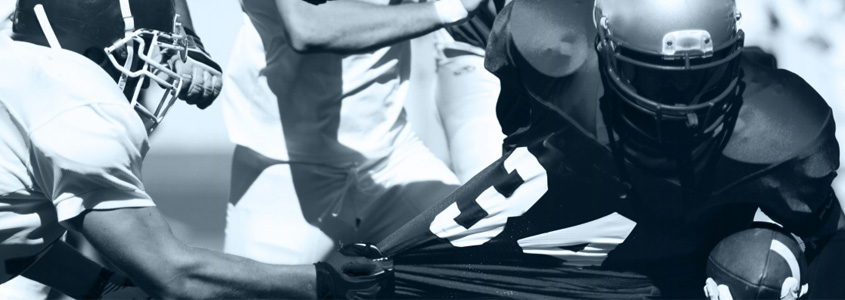Article Featured on Complete Concussion Management
Concussion is a serious concern for all athletes, particularly for those involved in contact, high-speed or collision sports. These injuries have become a significant issue for certain sports. In fact, some contact sports, such as American or tackle football, are seeing a decline in registration and participation year over year.
But, what sport – or sports – has the most concussions? What sports have higher concussion rates? What sports pose the greatest risk to athletes?
Looking at the research on concussion rates
There have been several large-scale epidemiological studies, which have examined the incidence rate of concussions in various sports for male and female athletes. Many of these studies look at the concussion rates in practices compared to games as well as youth sports compared to adult sports.
We went through some of the research using recent systematic reviews and meta-analyses – which are basically a collection of ALL the research put together – to bring you a summary of the sports with the highest risk for concussion.
The results may surprise you…
Athletic exposures: how we measure concussion rates
The rate of concussion is generally measured in ‘Athlete Exposures’ (AE). This is defined as one athlete participating in one game or practice.
The numbers for concussion incidence rate are typically shown as “X” per 1,000 AE.
This means that there are “X” number – or a certain number – of injuries for every 1,000 times one athlete plays in one practice or game.
Let’s look at a sport like football. A football team has about 50 players on the roster. Therefore, a practice would equal 50 AE, and a game played between 2 teams would be 100 AE. In other words, 10 games is equal to 1,000 AE in American football.
Adult athletes (18 years and older)
According to a recent systematic review, examining the concussion rate in team sports, men’s rugby was found to have the highest incidence of concussion in both match play (3.00/1,000 AE) and practice (0.37/1,000 AE).[1]
Men’s tackle football came in second for match play concussion rate at 2.5 per 1,000 AE, and third for concussions experienced during practice (0.30/1,000 AE).[1]
Women’s ice hockey came in third for match-play concussions with 2.27 per 1,000 AE and second for practice concussions with 0.31 per 1,000 AE.[1]
Check out the full list below:
Game Play
- Men’s rugby match play (3.00/1,000 AE)
- Men’s American football (2.5/1,000 AE)
- Women’s ice hockey (2.27/1,000 AE)
- Men’s Ice hockey (1.63/1,000 AE)
- Women’s soccer (1.48/1,000 AE)
- Men’s football (or soccer) (1.07/1,000 AE)
During practice
- Men’s rugby (0.37/1,000 AE)
- Women’s ice hockey (0.31/1,000 AE)
- Men’s American football (0.30/1,000 AE)
- Women’s football (or soccer) (0.13/1,000 AE)
- Men’s ice hockey (0.12/1,000 AE)
- Men’s football (or soccer) (0.08/1,000 AE)
One important finding is that in sports played by both men and women, women sports typically had a higher rate of concussion. This is especially interesting in sports like hockey. Women’s hockey is non-contact, but has a higher rate of concussion compared to men’s hockey – which is full body contact.
Youth athletes (18 years and under)
Concussions in youth sports are particularly concerning as recent evidence suggests that the earlier in life a concussion is experienced, the higher likelihood of having prolonged complications. This is potentially due to injuring a brain that is still developing.
Similar to adult sports, the youth sport with the highest rate of concussion is rugby at 4.18 concussions per 1,000 AE.[2] Unlike the above study, the youth study did not separate injury rate by male or female, or by games or practice.
Ice hockey had the second highest concussion rate with 1.20 concussions per 1, 000 AE. American football came in third (0.53 concussions/1000 AE).[2] See the full list below:
- Rugby (4.18/1,000 AE)
- Ice hockey (1.20/1,000 AE)
- American football (0.53/1,000 AE)
- Lacrosse (0.24/1,000 AE)
- Football (or soccer) (0.23/1,000 AE)
- Wrestling (0.17/1,000 AE)
- Basketball (0.13/1,000 AE)
- Softball & Field Hockey (Tie) (0.10/1,000 AE)
- Baseball (0.06/1,000 AE)
- Cheerleading (0.07/1,000 AE)
- Volleyball (0.03/1,000 AE)
Concussion vs. other injuries
Concussions account for a significant number of injuries in high school sports. In a 2012 study, researchers found that concussions account for over 15% of all injuries in some very popular sports.[3]
- Boys’ ice hockey: 23%
- Girls’ lacrosse: 21%
- Cheerleading: 20%
- Boys’ lacrosse: 17%
- Football: 17%
- Girls’ soccer: 15%
There are some significant limitations to these studies. It’s important to realize that as many as 50% of all concussions are not reported. This could be for a variety of reasons such as the culture of toughness in sport or for fear of missing games, for example.
There are also many sports that are missing from these lists because they do not have reliable tracking metrics at this time. Please take the above information with a grain of salt.
Involved in sport? Concussions are bound to happen in sport, but how we manage these injuries can make a big difference. As part of our commitment to athletes and sport, we develop, implement and enhance evidence-informed concussion management programs for sports and schools. What are you doing to help keep your athletes safe? Provide the program that’s right for you and your athletes!

